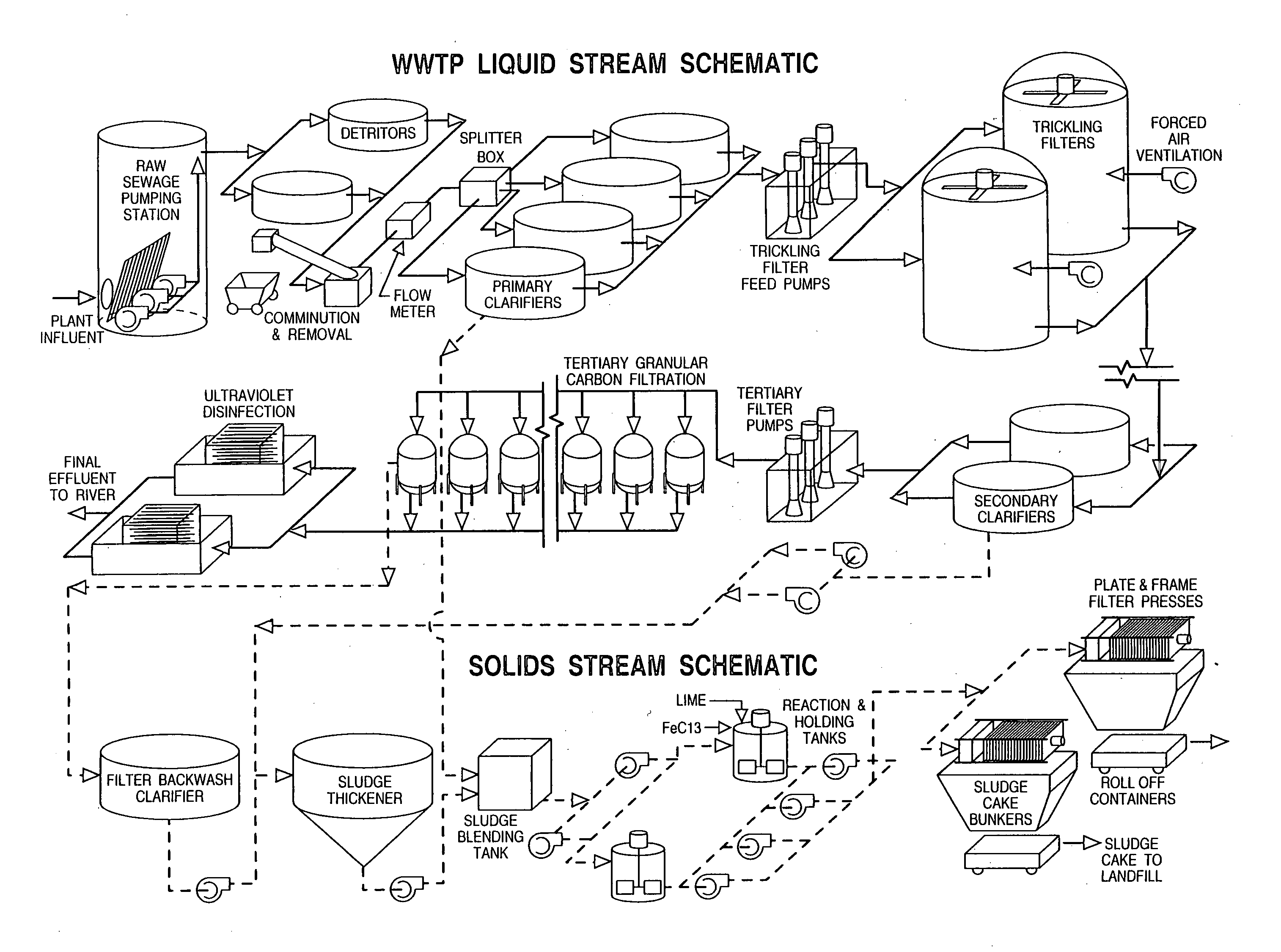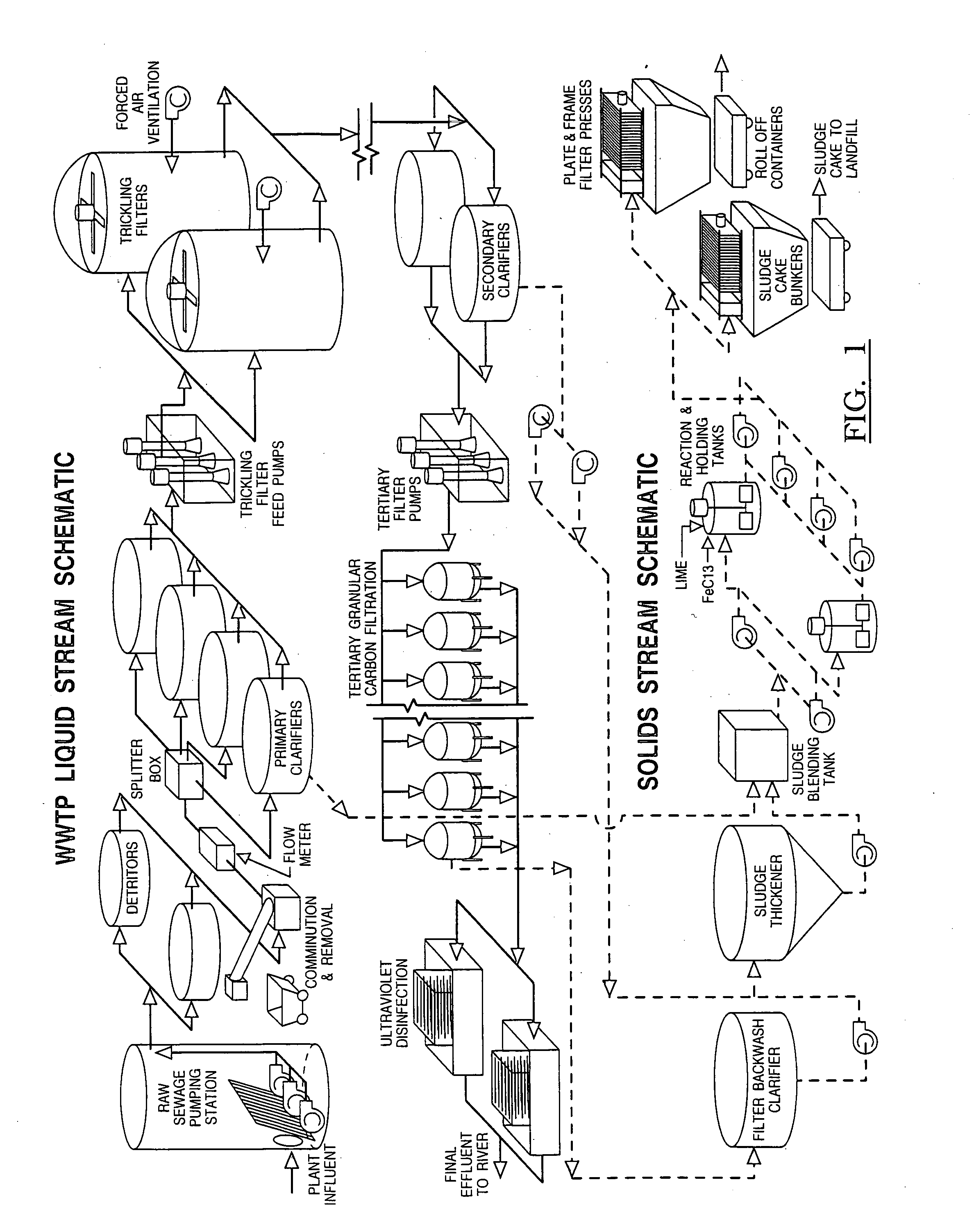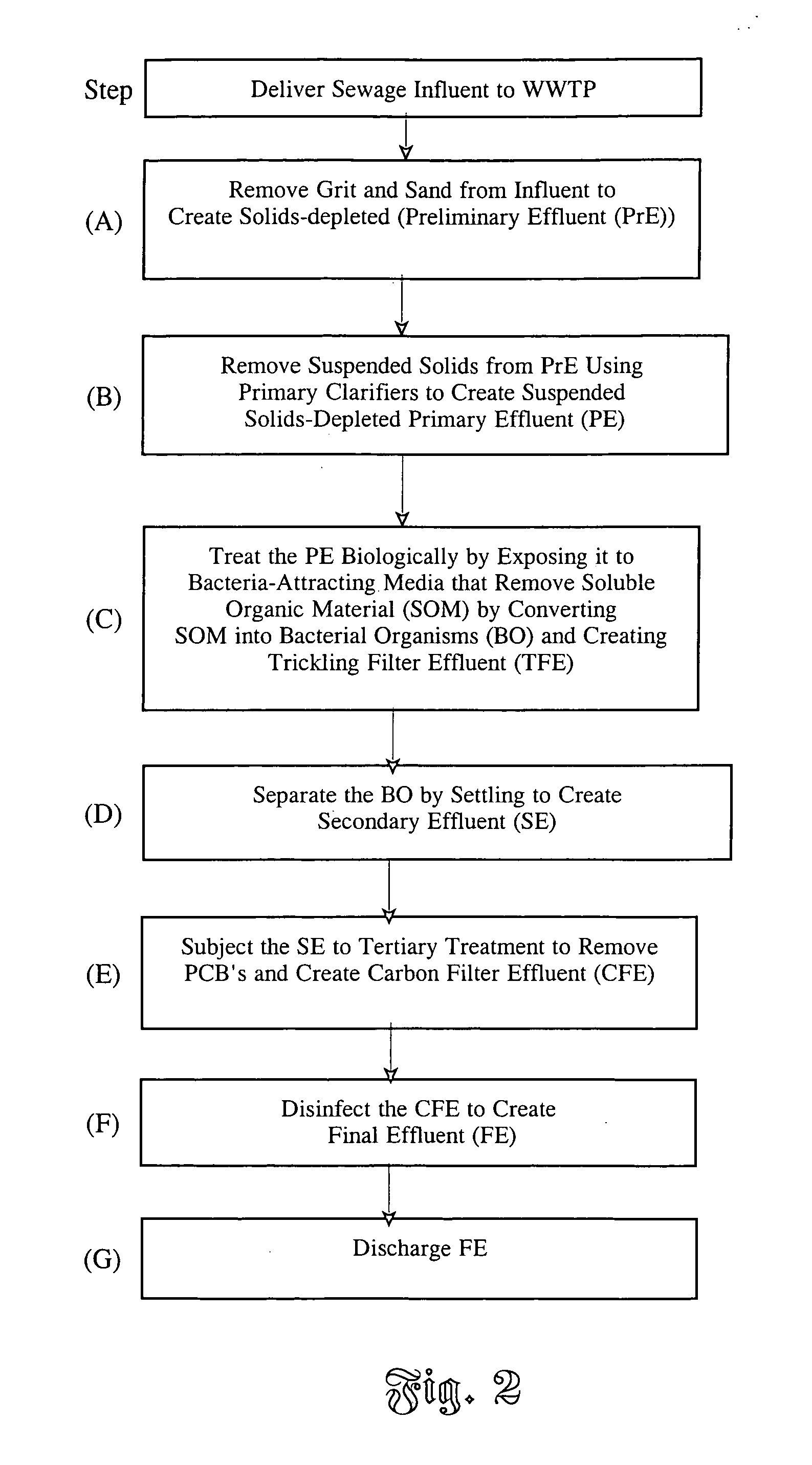Carbon filtration process and apparatus for removing PCB's and other compounds from wastewater
a carbon filter and wastewater technology, applied in the direction of chemistry apparatus and processes, multi-stage water/sewage treatment, sustainable biological treatment, etc., can solve the problem that the prefiltration before the granular activated carbon treatment provided minimal process benefits, and achieve the effect of saving millions of dollars in capital expenditures, cost-effectiveness, and saving an estimated $5 million in capital expenditures
- Summary
- Abstract
- Description
- Claims
- Application Information
AI Technical Summary
Benefits of technology
Problems solved by technology
Method used
Image
Examples
Embodiment Construction
[0020] Referring now to FIGS. 1-2, sanitary sewage (influent) is transported to a wastewater treatment plant (WWTP) through a series of sewers, pumping stations, and interceptors to a raw sewage pumping station, located at the WWTP. In one embodiment of the invention, the raw sewage pumping station contains five pumps which lift the wastewater from deep in the sewer system up into the treatment plant where various unit processes are located to purify the wastewater.
[0021] The first step (step A) in the treatment process involves removal of solids such as the sand and grit contained in the wastewater to create solids-depleted wastewater known as Preliminary Effluent (PrE) and thus protect downstream treatment plant systems from premature failure due to wear from the sand and grit. The solids are removed in tanks called detritors, where the sand and grit is allowed to settle out of the waste stream. Following sand and grit removal, the PrE continues to flow by gravity or pumping to o...
PUM
| Property | Measurement | Unit |
|---|---|---|
| diameter | aaaaa | aaaaa |
| pressure | aaaaa | aaaaa |
| volume | aaaaa | aaaaa |
Abstract
Description
Claims
Application Information
 Login to View More
Login to View More - R&D
- Intellectual Property
- Life Sciences
- Materials
- Tech Scout
- Unparalleled Data Quality
- Higher Quality Content
- 60% Fewer Hallucinations
Browse by: Latest US Patents, China's latest patents, Technical Efficacy Thesaurus, Application Domain, Technology Topic, Popular Technical Reports.
© 2025 PatSnap. All rights reserved.Legal|Privacy policy|Modern Slavery Act Transparency Statement|Sitemap|About US| Contact US: help@patsnap.com



